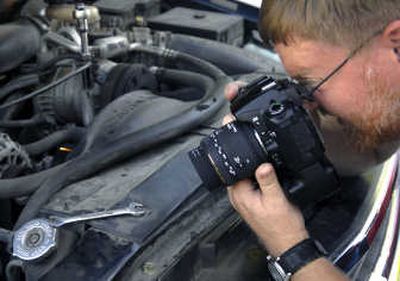Selling an image

Anyone looking to buy photos online for a brochure or magazine faces tons of choices. Online sites like GettyImages and Corbis sell pictures by the world’s best photographers. Some of the price tags for the best images run in the thousands, depending on how the picture will be used.
Or they can go to the Web’s alternative breed of “microstock” photo sites, where thousands of photographers, amateurs included, upload and sell similar pictures of trees, pets, people by ponds or other high-quality images for as little as $1 apiece.
Microstock sites are some of the busiest online arenas, and they’re growing fast. One of the first of those sites, iStockphoto based in Calgary, Alberta, reports the sale of an online image roughly every three seconds.
Other busy microstock sites are SnapVillage, Shutterstock, Fotolia, Dreamstime and Scoopt, a site catering to photographers shooting pictures at news events.
Beyond still photos, the sites have begun selling and allowing buyers to download short videos or animations uploaded by creators worldwide.
Steve Degenhardt, a 42-year-old Spokane resident, takes pictures of area sports teams and events. He uploads photos to Shutterstock, Dreamstime and Bigstockphoto.com, and says they account for about half of his photography sales. His biggest sellers so far: photos of a lighthouse, a fancy meal and a bison in a field.
Degenhardt likes the money but he also enjoys finding his pictures being used by others.
“It is really a neat feeling to go to a Web site and see some of my work. I have found many of my travel photos on vacation and state park Web sites,” he said.
Photographers are able, in most cases, to set a sales price per image. If the picture is purchased, the Web site takes as much as 80 percent of the sale. Some other microstock sites give the photographer a larger split, depending on the popularity of the photographer’s work.
Among those purchasing microstock photos are: ad agencies, companies needing images for commercials or brochures, graphic designers, Web publishers and print companies. Most say they’ve turned to microstock sites because they can find high-quality images at the right price.
Deb Kepler, marketing director for Northern Quest Casino, said, “We save time and we save money when we turn to iStockphoto” to find images for the casino’s publications. The casino has used iStockphoto for about two years, placing images in brochures, on billboards and on restaurant menus.
People describe the trend behind the microstock sites as “crowd-sourcing.” That term refers to the collective Web activity in which people in groups generate the bulk of the content. Other examples are crowd-sourced sites offering local news – such as Nowpublic.com – or technology solutions, such as the problem-solving site Innocentive.com.
Roger Ressmeyer, a former National Geographic photographer who runs Seattle-based Science Faction – which focuses on stock science photos – said three forces are feeding the growth in microstock sites. They are: smarter cameras and editing tools that simplify the job of taking good images; low-cost high-volume data storage; and improvements in search systems to get better results when hunting for image keywords.
Ressmeyer said today’s digital cameras simplify the decisions over lighting and shutter speed, giving amateurs more ways to take great photos.
Search-engine improvements have become key tools in helping photo buyers track down the exact image that fits a need, he added. He and other site managers wouldn’t reveal, he added, the most frequent keywords searchers use at their site. “Those are our crown jewels,” he said.
Ressmeyer said he cannot predict who the winners in the microstock industry will be. He prefers that Science Faction remain a specialized niche provider, allowing it to charge more than all-purpose image sites.
“Given that the image industry is in such a state of flux right now, my opinion is that a lot of businesses in that industry are clearly at risk,” he said.